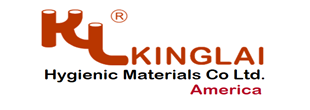Automatic Tube welding
Automated welding systems offer four main advantages: improved weld quality, increased output, decreased scrap.
Weld quality consists of two factors: weld integrity and repeatability. Automated welding systems ensure weld integrity through electronic weld process controllers. Combining mechanized torch and part motions with the electronic recall of welding parameters result in a higher quality weld that can be accomplished manually. This offers instantaneous quality control. Furthermore, because a weld is made only once, defects are readily visible and detectable. Humans tend to "smooth over" a mistake with the torch, hiding lack of penetration or a possibly flawed weld. In some cases, leak testing and vision systems can be integrated into fully automated systems to provide additional quality control.
KL raw material applies to ASTM 304 and 316L with good corrosion resistance and good performance in welding. KL is now using automatic welding, like Orbital welding, TIG welding, MIG welding.

TIG & Orbital.
1. Pulse heating is good for heat sensitive material welding because high temperature lasts a very short period of time and iron condensation is fast.
2. It’s good for thin coil welding because only small heat input and little space been affected.
3. It’s good for welding by one side in shape by both sides, because the size of heat input and welding pool can be controlled.
4. High-frequency arc shock to refine grain, eliminate porosity, improve joint performance.
5. It’s suitable for high-speed welding and can obtain better work efficiency.
A weakness of hand welding.
1.Crack 2. Non-fusion 3. Lack of penetration 4. Bubble 5. Undercut 6. Crater 7. Slag
inclusion 8. Burn through 9. Overlap 10. Forming uneven 11. Weld repair

